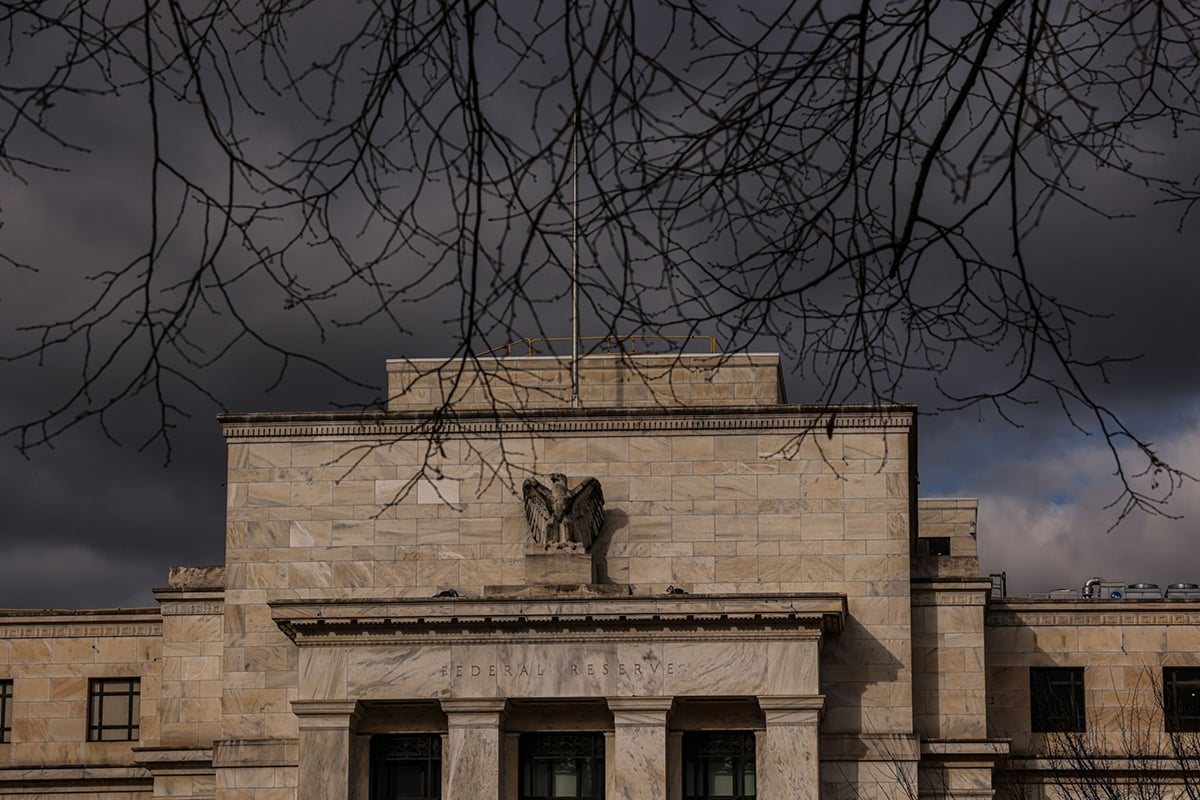Every day, the American bull market looks more and more like thedot-com bubble of the late 1990s. Except when it comes tovaluations.
|The Standard & Poor's 500 Index jumped above 2000 today, andthe Nasdaq Composite Index is within 10 percent of a record reachedin March 2000, a time when Pets.com Inc. was worth more than $150million. Investors have seen annualized returns of 24.5 percentsince March 2009, compared with 27.1 percent over an equal numberof days ending March 24, 2000, the peak of the Internet rally,according to data compiled by Bloomberg.
|Stocks are catching up to the pace of more than a decade agoamid record profits, near-zero interest rates, and economic growththat's expected to accelerate. While the dot-com bubble peaked withthe S&P 500 trading at close to 30 times annual earnings of itscompanies, the valuation is about 19 times now, data from S&PDow Jones Indices show.
|“We're on the expensive side of fair value, but certainly not inthe bubble place they were in the 2000 period or in a place thatconcerns us,” Ed Hyland, an Atlanta-based global investmentspecialist at JPMorgan Chase Private Bank, said in a phoneinterview. The firm oversees about $1 trillion. “There is potentialfor the market to go higher.”
|The S&P 500 rallied 0.3 percent to 2004.16 as of 10:57 a.m.in New York after a report showed the biggest ever jump indurable-goods orders and consumer confidence unexpectedlyincreased. The Chicago Board Options Exchange Volatility Index,known as the VIX, added 0.9 percent to 11.81.
|Five years of gains have driven the S&P 500 up 195 percent,compared with a 236 percent advance over the comparable periodended in March 2000. With the Federal Reserve calling valuations insmaller biotechnology and social-media companies “stretched” andmega-deals resurfacing, concern is growing that prices are toohigh.
|Over the past three years, investors have seen a flood oftechnology and Internet companies go public, including King DigitalEntertainment Plc, Yelp Inc., and Twitter Inc. Alibaba GroupHolding Ltd., the Chinese e-commerce company, is working on aninitial public offering that may be the biggest in U.S.history.
|The dot-com bubble was marked by unprofitable Internet companiesselling shares for the first time, such as Pets.com, which had asock puppet mascot and raised $82.5 million in February 2000. Thecompany has since gone out of business.
|'Upward Trend'
|“At this point, what the market should be doing is debatable,”Brad McMillan, chief executive officer at Commonwealth FinancialNetwork in San Diego, said by phone. His firm oversees about $86billion. “Right now there's a clear upward trend.”
|This bull market has seen widespread gains across all kinds ofcompanies, unlike the technology bubble when the best performancewas concentrated in computer shares. The S&P 500 Equal WeightIndex, which strips out biases related to market value, has risenan annualized 28 percent since 2009, almost double the return fromthe last half of the Internet bubble.
|An average of 380 S&P 500 stocks have increased during eachof the last five years, compared with 307 in the 1990s, datacompiled by Bloomberg show. At the record yesterday, 48 stocks hita 52-week high, compared with 27 at the peak in 2000.
|The “market is being rational, responding to improving domesticeconomic news, extraordinarily low interest rates, easy monetarypolicy, and limited inflation,” Howard Ward, chief investmentofficer for growth equities at Rye, New York-based Gamco InvestorsInc., which oversees about $47 billion, wrote in an e-mail. “Themarket's valuation level is very defensible.”
|Options traders are seeking protection against losses after theS&P 500 climbed about 8 percent this year and has gone withoutposting a decline of 10 percent since 2011.
|About 2.2 bearish puts were owned for every call betting ongains in the benchmark equity gauge, near the highest ratio sinceOctober 2008, data compiled by Bloomberg show. Puts wagering on aslide to 1950 by Sept. 20 had the biggest open interest.
|Viewed as one long bull market beginning in October 1990, thedot-com bubble is much larger than the current rally. The S&P500 climbed more than 400 percent over that stretch and the NasdaqComposite Index increased 15-fold, producing annualized returns ofmore than 33 percent for almost 10 years.
|The Nasdaq peaked at 5,048.62 March 10, 2000, and would have torise more than 10 percent from its current level of 4,557.35 tosurpass that record. Since stocks bottomed five years ago, thegauge's best annual performance was in 2009, when it rose 44percent. That's about half its return in 1999.
|“The underlying fundamentals justify the level of U.S. stocks,”Cameron Hinds, regional chief investment officer at Wells FargoBank NA in Lincoln, Nebraska, said in a phone interview. “We're notat the same level of extremes as in 2000, when valuations wereclearly excessive and were apparent not just in hindsight but atthe time.”
|Copyright 2018 Bloomberg. All rightsreserved. This material may not be published, broadcast, rewritten,or redistributed.
Complete your profile to continue reading and get FREE access to Treasury & Risk, part of your ALM digital membership.
Your access to unlimited Treasury & Risk content isn’t changing.
Once you are an ALM digital member, you’ll receive:
- Critical Treasury & Risk information including in-depth analysis of treasury and finance best practices, case studies with corporate innovators, informative newsletters, educational webcasts and videos, and resources from industry leaders.
- Exclusive discounts on ALM and Treasury & Risk events.
- Access to other award-winning ALM websites including PropertyCasualty360.com and Law.com.
*May exclude premium content
Already have an account? Sign In
© 2024 ALM Global, LLC, All Rights Reserved. Request academic re-use from www.copyright.com. All other uses, submit a request to [email protected]. For more information visit Asset & Logo Licensing.







